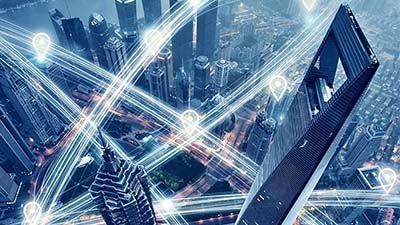New Criteria for a New, Smart Building Era
“A smart building is an active contributor to the experience and success of its stakeholders.”
What is a smart building?
A smart building is any structure that uses automated processes to automatically control the building’s operations including heating, ventilation, air conditioning, lighting, security and other systems. A smart building uses sensors, actuators and microchips, in order to collect data and manage it according to a business’ functions and services. This infrastructure helps owners, operators and facility managers improve asset reliability and performance, which reduces energy use, optimizes how space is used and minimizes the environmental impact of buildings.
Buildings that aren’t “connected” are the same buildings they were decades ago. They have provided the essentials: shelter, temperature control and safety at the same efficiency level for years. But newer buildings, or older structures that have been converted to smart buildings, are constantly changing. They are living organisms connected to a network with intelligent and adaptable software.
The benefits
Creating or transforming a building into a smart building is beneficial for both the owner and the organizations working within.These benefits range from energy savings to productivity gains to sustainability. Smart building strategies can reduce energy costs, increase the productivity of the facility staff, improve building operations, support sustainability efforts and enhance decision-making across the organization.
One example of energy efficiency is the use of optimal start/stop, which allows the building automation system to learn when it should bring the air conditioning system online for a particular zone in the building. Another feature is electrical loads that are grouped into categories from critical to high priority to non-essential.
“When the building load is rising and approaching the high limit setting, the nonessential loads are turned off in their subgroup order, followed by the high-priority loads.
New Criteria for a New, Smart Building Era
Technology enabling data capture and analysis, connectivity, monitoring and control is becoming the new baseline for smart buildings of tomorrow. Understanding what it is and where it’s headed is critical.
“We need to ensure that the technology installed today is future-proofed and can interact easily with other devices/ control systems – this is critical for smart buildings. There is an emerging danger period where we have technology that is quickly becoming redundant.”
“There has been the expectation that a digital twin model will improve the operational efficiency of a building. But in order to do so, the digital twin will need to contain both static data from the construction phase of the building and the dynamic data of the technical systems and the occupants during the operational phase. The industry is only at the beginning of learning how to connect the static and dynamic data into the digital twin.
“The Corporate Real Estate industry will increasingly engage with occupiers to understand space needs better and clever optimized use of space will be a major future factor. Space will become more activity based with overall reduced area and higher utilization. Ongoing monitoring of space use will allow these learnings to constantly improve.”
“Digitalization hits all the sustainability elements. It can provide efficiency improvements through optimization way beyond the current building management system (BMS) capability. It will also be key for improving health and well-being, and occupiers will soon want to know about internal air quality, driving landlords to monitor and improve air quality levels.”
“We have reached the tobacco moment of climate change, and people are starting to take action against companies and organizations. Pension funds have a duty to look at the long term and therefore responsibility to manage this risk. Digitalization can help with demonstrating this risk management.”
Why do buildings matter?
We spend up to 90 percent of our lives in buildings, and we believe that everything people do in life deserves a perfect place to do it. In a world where our fundamental health, safety and wellbeing expectations have been deeply impacted with the anxiety of a new virus, buildings should offer a haven. Ideally, a perfect place to learn. A perfect place to grow. A perfect place to prosper.
While it’s true that today’s buildings should be efficient, reliable and safe – these characteristics alone don’t enable businesses and empower people the way a true smart building can.
Adaptability is crucial. Smart building interact with the people, systems and external elements around them. They learn from past experiences and real-time inputs. They adapt to the needs of the people and the businesses within them by increasing comfort, efficiency, resiliency and safety. And today there is a new need: to protect people from COVID-19. When we use technology to support the people in buildings, we create environments that care.
Make buildings healthy and safe places to return to
The measures taken against the spread of the coronavirus force building operators and facility managers to rethink building and workplace strategies. The health and safety of employees, partners and customers is the first priority. The efforts of the individuals practicing physical distancing and increased hygiene measures can be massively supported by smart building technology. Our offerings on heating, ventilation and air-conditioning (HVAC), room automation and building management systems (BMS) help create healthy, productive, sustainable environments and safe workplaces for people to return to after the crisis and beyond.
Enabling reliability and resilience of your buildings and infrastructure
Similarly to understand how technologies can support remote working environments despite one’s location, the data capabilities of smart buildings together with building automation enable remote operations. This has proven to be valuable in a pandemic. It allows the building operator to control the building remotely for maximum impact in regards to energy consumption, to ensure cost savings and reduced carbon emissions. Building twin can further extend the building operator’s capability to access all the data remotely.
Support identification and limiting spread of infection
The need for body temperature detection will prove to be critical as workplaces, airports and restaurants re-open. To mitigate any risks caused by the spread of the virus, technologies which allow for efficient scanning of temperatures as occupants and visitors enter the building will be deployed. The integration of the body temperature detection with access control enables a highly secure and contactless solution.
When deployed with the Surveillance solution it enables an accuracy of better than +/-0.5°C at 37°C.
Transforming smart building data into economic benefits
Smart infrastructure can transform cities and industries. But accelerating technological transition will require private investment, including a diverse range of financing models behind the innovative technologies. From intelligent building systems to energy efficiency technology, financing plays a key role in helping buildings – from hospitals, schools, to commercial and government buildings – harness sustainable capital for growth and innovation while acquiring future-proof technological benefits.
Highlights from the smart buildings portfolio
Thanks to advanced building technologies we can support your core business. One of the most important systems is a building management platform that ensures all disciplines interact optimally. Room automation, for example, assures a uniform control strategy and creates a perfect interaction between HVAC systems, lighting and shading. Building tenants benefit from individual comfort control and optimal air quality. But they want to feel safe too. This is where high-tech fire safety and security systems enter the picture. They ensure appropriate access and simplify security processes. What’s more, all systems are flexible and can be adapted quickly and inexpensively to new room requirements and layouts.


